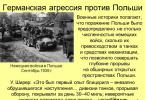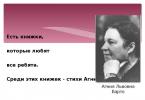- Physics teacher of the highest category
- Sarandaeva Valentina Nikolaevna
- Laser (NASA laboratory).
- Laser (red, green, blue).
- Other types of lasers, the development of the principles of which is currently a priority research task (X-ray lasers, gamma lasers, etc.).
- A naval laser that burns through 600 meters of steel.
- Using lasers
- Laser accompaniment of musical performances (laser show) readers
- barcodes
- In industry, lasers are used for cutting, welding and soldering parts made of various materials.
- Metal cutting Lasers are used to obtain surface coatings of materials (laser alloying, laser surfacing, vacuum laser deposition) in order to increase their wear resistance.
- Laser marking of industrial designs and engraving of products made of various materials are also widely used.
- Engraving on jewelry
- Laser chemistry is a branch of physical chemistry that studies chemical processes that arise under the influence of laser radiation and in which the specific properties of laser radiation
- Options for creating air, sea and ground-based combat defense systems based on high-power lasers are being considered.
- Revolver, equipped laser pointer
- Anti-missile solid-state laser
- They are also widely used in cosmetology (laser hair removal, treatment of vascular and pigmented skin defects, laser peeling, removal of tattoos and age spots)
- laser communication
- It is known that the higher the carrier frequency of a communication channel, the greater its throughput. Therefore, radio communications tend to move to ever shorter wavelengths. The wavelength of light is on average six orders of magnitude shorter than the wavelength of the radio range, so laser radiation can transmit a much larger amount of information. Laser communication is carried out through both open and closed light-guide structures, for example, optical fiber. Due to the phenomenon of total internal reflection, light can propagate through it over long distances, practically without weakening
- This is what the lasers themselves look like.
LASER (optical quantum generator) – a device
generating
coherent
And
monochromatic
electromagnetic waves in the visible range due to
stimulated emission or scattering of light by atoms
(ions, molecules) of the active medium.
The word "laser" is an abbreviation of the English phrase "Light"
Amplification by Stimulated Emission of Radiation” – amplification
light by stimulated emission. Let's look at these concepts
more details.
Quantum generators have created unique properties of laser radiation
an indispensable tool in various fields of science and technology.
For example:
1.
2.
3.
4.
5.
Technical lasers
Laser communication
Lasers in medicine
Lasers in scientific research
Military lasers
Technical lasers
High-power continuous lasers are used tocutting, welding and soldering parts from various materials.
High radiation temperature allows welding
materials that cannot be joined by other methods
(for example, metal with ceramics). High monochromaticity
radiation allows you to focus the beam to a point with a diameter
on the order of a micron.
Technical lasers
An ideally straight laser beam serves as a convenient “ruler”.Pulsed lasers are used in geodesy and construction
to measure distances on the ground, calculating them according to
time of movement of a light pulse between two points.
Accurate measurements in industry are made when
aided by the interference of laser beams reflected from
end surfaces of the product.
Laser communication
The advent of lasers revolutionized communications and recording technology.information. There is a simple pattern: the higher the carrier
frequency (smaller wavelength) of the communication channel, the greater its
throughput. That is why radio communication, at first
Having mastered the long wave range, she gradually switched to all
shorter wavelengths. The laser beam can be transmitted to
tens of thousands of times more information than high-frequency
radio channel. Laser communication is carried out via optical fiber
– thin glass threads, the light in which due to the complete
internal reflection propagates practically without loss to
many hundreds of kilometers. The laser beam records and
reproduce images (including moving ones) and sound on
CDs.
Lasers in medicine
Laser technology is widely used insurgery, and in therapy. Laser beam
introduced
through
ocular
pupil,
“weld” the detached retina and
correct eye defects
bottom.
Surgical operations performed
"laser
scalpel"
less
injure living tissue. A laser
low power radiation accelerates
healing of wounds and has an effect,
similar
acupuncture,
practiced by oriental medicine
(laser acupuncture).
Scientific research
Extremely high radiation temperature and high densityenergy makes it possible to study matter in extreme
a state that exists only in the interiors of hot stars. Are being done
attempts to carry out a thermonuclear reaction by squeezing an ampoule with a mixture
deuterium with tritium system of laser beams (so-called inertial
thermonuclear fusion). In genetic engineering and nanotechnology
(technology that deals with objects with characteristic sizes of 10–9
m) laser beams cut, move and connect fragments
genes, biological molecules and details on the order of a millionth
fractions of a millimeter (10–9 m). Laser locators (lidars) are used for
atmospheric research.
LASER (optical quantum generator) is a device that generates coherent and monochromatic electromagnetic waves in the visible range due to the stimulated emission or scattering of light by atoms (ions, molecules) of the active medium. The word “laser” is an abbreviation of the English phrase “Light Amplification by Stimulated Emission of Radiation” - amplification of light by stimulated emission. Let's look at these concepts in more detail.



Laser Applications The unique properties of laser radiation have made quantum generators an indispensable tool in a wide variety of fields of science and technology. For example: 1.Technical lasers 2.Laser communications 3.Lasers in medicine 4.Lasers in scientific research 5.Military lasers

Technical lasers High-power continuous lasers are used for cutting, welding and soldering parts made of various materials. The high temperature of the radiation makes it possible to weld materials that cannot be joined by other methods (for example, metal with ceramics). The high monochromaticity of the radiation allows the beam to be focused to a point with a diameter of the order of a micron.

Technical lasers An ideally straight laser beam serves as a convenient “ruler”. In geodesy and construction, pulsed lasers are used to measure distances on the ground, calculating them based on the time of movement of a light pulse between two points. Precise measurements in industry are made using the interference of laser beams reflected from the end surfaces of the product.

Laser communication The advent of lasers revolutionized communication technology and information recording. There is a simple rule: the higher the carrier frequency (smaller wavelength) of the communication channel, the greater its throughput. That is why radio communications, which initially mastered the long wavelength range, gradually switched to shorter and shorter wavelengths. A laser beam can transmit tens of thousands of times more information than a high-frequency radio channel. Laser communication is carried out via optical fiber - thin glass threads, the light in which, due to total internal reflection, propagates practically without loss over many hundreds of kilometers. A laser beam is used to record and reproduce images (including moving ones) and sound on CDs.

Lasers in medicine Laser technology is widely used in surgery and therapy. A laser beam introduced through the eye pupil “welds” the detached retina and corrects fundus defects. Surgical operations performed with a “laser scalpel” cause less damage to living tissue. And low-power laser radiation accelerates wound healing and has an effect similar to acupuncture practiced in oriental medicine (laser acupuncture).

Scientific research The extremely high temperature of radiation and its high energy density make it possible to study matter in an extreme state that exists only in the depths of hot stars. Attempts are being made to carry out a thermonuclear reaction by compressing an ampoule containing a mixture of deuterium and tritium with a system of laser beams (so-called inertial thermonuclear fusion). In genetic engineering and nanotechnology (technology that deals with objects with characteristic dimensions of 10–9 m), laser beams cut, move and connect fragments of genes, biological molecules and parts measuring about a millionth of a millimeter (10–9 m). Laser locators (lidars) are used to study the atmosphere.

Military Lasers Military applications of lasers include both their use for target detection and communications and their use as weapons. It is planned to use beams of powerful ground-based and orbital-based chemical and excimer lasers to destroy or disable enemy combat satellites and aircraft. Samples of laser pistols have been created to arm crews of orbital stations for military purposes.
Slide 2
The word LASER is an acronym that stands for Light Amplification by Stimulated Emission of Radiation ((L) light (A) amplification (S) stimulated by the (E) emission of (R) radiation) and describes a method of generating light. All lasers are optical amplifiers that operate by pumping (exciting) an active medium placed between two mirrors, one of which transmits part of the radiation. An active medium is a collection of specially selected atoms, molecules or ions, which can be in a gaseous, liquid or solid state, and which, when excited by pumping action, will generate laser radiation, i.e. emit radiation in the form of light waves (called photons). Pumping of liquids and solids is achieved by irradiating them with light from a flash lamp, and gases are pumped using an electrical discharge. What is a laser?
Slide 3
Properties of Laser Light The light beam is collimated, meaning that it travels in one direction with very little divergence even over very long distances Laser light is monochrome, consisting of a single color or a narrow range of colors. Regular light has a very wide range of wavelengths or colors Laser light is coherent, meaning that all light waves move in phase together in both time and space A laser is a device that creates and amplifies a narrow, intense beam of coherent light
Slide 4
Today, lasers are widely used in medicine, manufacturing, construction, surveying, consumer electronics, scientific instrumentation, and military systems. There are literally billions of lasers in use today. They are part of such familiar devices as barcode scanners used in supermarkets, scanners, laser printers and CD players. Applications of lasers
Slide 5
Since Maiman's invention of the ruby laser in 1960, many potential applications have been proposed. In the medical field, the capabilities of lasers began to develop faster after 1964, when the carbon dioxide laser was invented, which soon gave surgeons the ability to perform very complex procedures using photons instead of a scalpel to perform operations. Laser light can penetrate the body, performing surgeries that would have been nearly impossible to perform a few years ago, with minimal risk or discomfort to the patient. Shorter (green) lasers are used to "weld" the detached retina, and are used to stretch protein molecules to measure their strength, etc. Application of lasers in medicine
Slide 6
In 1964, the possibility of using the ruby laser to treat dental caries was proposed, which attracted worldwide attention. In 1967, while attempting to remove caries and prepare a cavity using a ruby laser, he was unable to avoid damage to the dental pulp, despite good results obtained on the extracted teeth. Later, similar basic research with CO2 laser also encountered this problem. To minimize heat buildup, pulsed lasers were used instead of continuous radiation. Further research demonstrated that the laser could produce a small local anesthetic effect. Further developments led to the creation of a laser that drills through enamel and dentin completely. At the same time, the laser preserves more healthy tooth tissue. With today's lasers there is virtually no unwanted heat, noise or vibration. When leaving the dental chair, most patients felt no pain, did not have to wait for anesthetic and numbness to wear off, and experienced little or no post-operative discomfort. Lasers are precise and virtually painless and can change the way you think about visiting the dentist. They can change everything. Application of lasers in dentistry
Slide 7
Lasers are a significant breakthrough in dentistry, both for gums and other soft tissues, and for the teeth themselves. Nowadays, a significant number of laser technologies and treatment methods are widely used.
Today, lasers are used in the following areas of dentistry: Prevention Periodontics Aesthetic dentistry Endodontics Surgery Implantodontics Prosthetics The use of lasers in dentistry
Currently, lasers are widely used in the woodworking industry, and their area of distribution has expanded significantly in recent years. The use of lasers facilitates the positioning of workpieces (video), combining the external patterns of two workpieces, minimizing waste generated, and installing complex structural elements of buildings and structures. Lasers used in woodworking can reproduce a line, the intersection of lines (to indicate the center) or a 2 or 3 dimensional image (projectors). Laser systems in woodworking
Slide 9
as logical elements for input and reading from storage devices in computers laser printer optical information transmission Lasers in computer technology
Slide 10
The laser can also be used for non-contact measurements of geometric dimensions (gap, length, width, thickness, height, depth, diameter). Using a laser, you can also obtain complex measurements: deviation from verticality; the amount of surface flatness; profile accuracy; It is possible to obtain derived quantities such as deflection and convexity.
Laser measuring systems allow you to automatically monitor product parameters and immediately change the parameters of the production line if any deviation occurs. The product is exclusive in this area because it has the following properties: Highly accurate Allows control of the quality and characteristics of geometrically complex parts Does not damage or destroy the surface of the product Works in any conditions on any surfaces Easily integrated into an existing production line Lasers in measurements
Classification of lasers Class I lasers Do not pose a hazard under continuous observation or are designed to prevent human exposure to laser radiation (such as laser printers) Class 2 visible lasers (400 to 700 nm) Lasers that emit visible light that is due to natural human negative reactions are usually not dangerous, but may be if you look directly at the laser light for an extended period of time. Class 3aLasers that generally do not cause harm when briefly in contact with the eye, but may pose a hazard when viewed using collecting optics (fiber optic loupes or telescopes) Class 3bLasers that pose a hazard to the eyes and skin when exposed directly to laser light. Class 3b lasers do not produce hazardous diffuse reflection except at close range. Class 4 lasers are lasers that present an eye hazard through direct, specular, and diffuse reflection. In addition, such lasers can be a fire hazard and cause burns to the skin.
Slide 12
EYE PROTECTION - Everyone in the operating room must wear special safety glasses. The light coming out of the laser can seriously damage the cornea and retina of unprotected eyes. Glasses must have side protection and be worn over regular glasses. Laser safety glasses must be available and worn by all personnel within the Nominal Hazardous Area of Class 3b and Class 4 lasers where exposures in excess of the Maximum Allowed may occur. The optical density absorption coefficient of laser safety glasses for each laser wavelength is determined by the LaserSafetyOfficer (LSO). All laser safety glasses are clearly marked with the optical density and wavelength that the glasses are designed to protect against. Laser safety glasses should be checked for damage before use. REFLECTION - Laser light is easily reflected and care must be taken not to direct the beam onto polished surfaces. ELECTRICAL HAZARD - The internal parts of the laser carry high voltage and emit invisible laser beams without any shielding. Only technicians trained in electrical and laser safety are authorized to perform internal maintenance. Security measures
Slide 13
– a type of directed energy weapon based on the use of electromagnetic radiation from high-energy lasers. The damaging effect of laser beams is determined mainly by the thermomechanical and shock-pulse effects of the laser beam on the target. Depending on the flux density of the laser radiation, these effects can lead to temporary blinding of a person or to the destruction of the body of a rocket, aircraft, etc. In the latter case, as a result of the thermal effect of the laser beam, the shell of the affected object melts or evaporates. At a sufficiently high energy density in the pulsed mode, along with the thermal one, a shock effect is carried out due to the appearance of plasma. Currently, work continues in the United States on the creation of an aviation laser weapon complex. Initially, it is planned to develop a demonstration model for the Boeing 747 transport aircraft and, after completing preliminary studies, move on to 2004. to the full-scale development stage. As of the mid-90s, tactical laser weapons were considered to be the most developed, providing damage to optical-electronic devices and human visual organs. Laser weapons
Slide 1
Slide description:
Slide 2
Slide description:
Slide 3
Slide description:
Slide 4
Slide description:
Slide 5
Slide description:
Slide 6
Slide description:
Slide 7
Slide description:
Slide 8
Slide description:
Slide 9
Slide description:
Slide 10
Slide description:
Slide 11
Slide description:
Slide 12
Slide description:
Slide description:
Ultrashort laser pulses are used in laser chemistry to trigger and analyze chemical reactions. Here, laser radiation allows for precise localization, dosage, absolute sterility and high speed of energy input into the system. Currently, various laser cooling systems are being developed, and the possibilities of implementing controlled thermonuclear fusion using lasers are being considered (the most suitable laser for research in the field of thermonuclear reactions would be a laser using wavelengths in the blue part of the visible spectrum). Lasers are also used for military purposes, for example, as guidance and aiming aids. Options for creating air, sea and ground-based combat defense systems based on high-power lasers are being considered. Ultrashort laser pulses are used in laser chemistry to trigger and analyze chemical reactions. Here, laser radiation makes it possible to ensure precise localization, dosage, absolute sterility and high speed of energy input into the system. Currently, various laser cooling systems are being developed, and the possibilities of implementing controlled thermonuclear fusion using lasers are being considered (the most suitable laser for research in the field of thermonuclear reactions would be a laser using wavelengths in the blue part of the visible spectrum). Lasers are also used for military purposes, for example, as guidance and aiming aids. Options for creating air, sea and ground-based combat defense systems based on high-power lasers are being considered.
Slide 15
Slide description:
Slide description:




